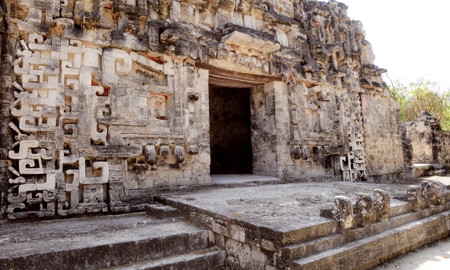
Governor Fernando Ortega speaks about Campeche State’s natural resources, diverse and strong economic sectors, advances in education and ongoing development projects.
How has the state’s economy evolved and what are some of its future projects?
The state’s economy has long been focused on developing its natural resources. In the past, Campeche produced wood-derived materials that were exported all over the world. Later on, it was the fishing industry that was a major breadwinner. Three decades ago, Campeche began developing its oil resources and today, we produce about 70 per cent of Mexico’s total crude oil and more than 30 per cent of its natural gas.
There is a close, harmonious relationship between Campeche and Pemex, and currently we’re looking at ways to raise efficiency.
How important is the agriculture sector in Campeche today?
Here, four of the sector’s most important products are produced: maize, sorghum, rice and soybean. Fortunately, in Campeche there are no water scarcity problems like in the north of the country and this makes it attractive for both national and even foreign investors.
Before being elected Governor, you served as Secretary of Education. What is Campeche doing to advance the education sector?
We indisputably support the Peña administration’s educational reform. It is vital that our education should be of quality. Coverage has been expanded and now the challenge is that this education should be at the same level of that in highly developed countries.
In Campeche, we are convinced that Mexico’s most valuable resources are its own people. Investing in education is a challenge and an indispensable commitment on which we are working.
Three years ago in basic education Campeche stood in the middle of the federal ranking; we are pleased to say that last year we rose to second place, a great achievement that we hope to surpass soon. In terms of higher learning we have created technological options in areas where we have social challenges related to poverty and marginalisation.
More than 40 per cent of Campeche’s territory is a protected natural area. You are investing in infrastructure to develop tourism. What does Campeche offer foreign tourists?
Thanks to its immense natural wealth and geographical location, the state has always been considered as a large ecological reserve that also boasts fertile soil, varied climates and above all, generous water reserves for agricultural activities. Today it is oil that generates most wealth, but perhaps in the future, it will be water that represents Campeche’s main competitive advantage.
Since you became Governor in 2009, Campeche has been one of Mexico’s fastest growing states and is in constant development. What are your biggest achievements in this government?
My government has achieved harmony and security in the state; we have one of the lowest insecurity rates in Mexico. This atmosphere facilitates, among other things, investment.
We are seeing interest in the tourism and agricultural sectors. For three consecutive years we have enjoyed growth in production in the agricultural sector, but due to the inadequacy of infrastructure and technology in this sector, farmers are heavily dependent on the weather and the seasons.
The time has come to see the land as a source of great opportunities and one that can strengthen Mexico’s food sovereignty.
On the issues of infrastructure we are modernising intraregional roads and supporting port development, as Campeche is a state with more than 500 km of coastline, harmoniously shared by the oil sector, fisheries and tourism.
0 COMMENTS